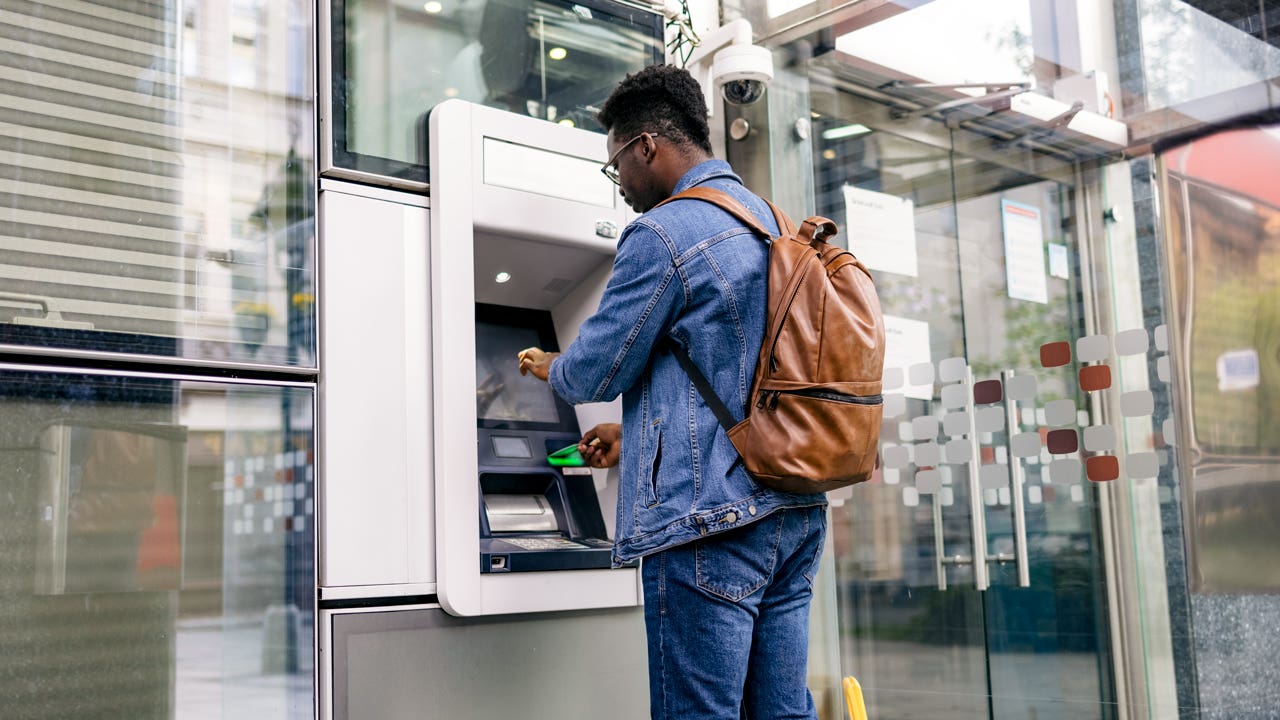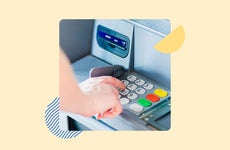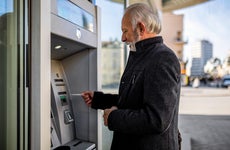8 banks that reimburse ATM fees

The Bankrate promise
At Bankrate we strive to help you make smarter financial decisions. While we adhere to strict , this post may contain references to products from our partners. Here's an explanation for .
ATM fees are among the most commonly charged banking fees — and they’ve hit a record high. Fortunately, many banks and credit unions are making it possible for customers to take out cash without having to pay for it.
Reimbursing out-of-network ATM fees is another way that some financial institutions are breaking out of the traditional banking model. Many have already eliminated overdraft fees and monthly maintenance fees. Banks and credit unions that reimburse some, or all, ATM fees are taking another step toward making everyday transactions less costly for consumers.
Here are eight banks and credit unions in the U.S. that pay you back for out-of-network ATM fees.
Alliant Credit Union
Alliant Credit Union offers up to $20 a month in ATM fee rebates when you use the Alliant Visa debit card. The rebate is deposited into your checking account at the end of each day that you’re charged ATM fees, excluding foreign transaction fees.
Ally Bank
One of the top-rated banks according to Bankrate’s bank reviews, Ally Bank is known for charging very few fees on its accounts. It has no overdraft fees, incoming wire fees or maintenance fees, and it reimburses up to $10 a month in out-of-network ATM fees, though foreign transaction fees aren’t included.
Axos Bank
Axos Bank offers unlimited domestic ATM fee reimbursements for the Essential Checking (its standard checking account), Rewards Checking and Cashback Checking accounts. On the Golden Checking account, which is designed for customers ages 55 and over, up to $8 in ATM fees can be reimbursed each month.
Charles Schwab Bank
With a Charles Schwab High Yield Investor Checking account, customers receive unlimited ATM fee rebates. All ATM fee reimbursements each month appear as a lump sum at the end of the month. While you may be charged a conversion fee when banking internationally, Charles Schwab also doesn’t charge foreign transaction fees.
LendingClub
At LendingClub, customers with either a Rewards Checking or Tailored Business Checking account receive unlimited ATM fee reimbursements. The reimbursements are deposited into your account at the end of each month.
Navy Federal Credit Union
Navy Federal Credit Union offers up to $10 in ATM fee rebates per statement cycle for its Free Easy Checking account. To be eligible for the account, members must either set up direct deposit or make at least 20 transactions each month, or the account will be converted to one that does not reimburse ATM fees. To join Navy Federal Credit Union, you’ll also need to be a member of the military or have a household connection to someone who is.
TD Bank
With TD Bank’s Beyond Checking account, customers can get unlimited out-of-network ATM fee reimbursements. However, a minimum balance of $2,500 in the account is required to qualify for ATM fee reimbursements.
EverBank
Formerly known as TIAA Bank, EverBank checking accounts that don’t have minimum balance requirements offer up to $15 in ATM fee rebates each month. Accounts that require a minimum average daily balance of $5,000 provide unlimited reimbursement of ATM fees.
What Americans pay in ATM fees
ATM fees are at a record high. According to Bankrate’s latest checking account survey, Americans, on average, pay $4.73 per out-of-network ATM transaction. That amount is the highest since 2019.
The total out-of-network ATM charge usually includes two fees: an out-of-network fee from your bank and a surcharge from the ATM owner. The average out-of-network fee among banks that charge it is $1.58. While many banks don’t charge this fee, customers still have to pay the ATM owner’s surcharge, which is $3.15 on average.
Moreover, bank fees tend to hit Black and Hispanic customers disproportionately, according to another Bankrate survey. While the survey doesn’t account specifically for ATM fees, it suggests that white customers are more likely to have no-fee bank accounts than Black and Hispanic customers. Reimbursing ATM fees — particularly when there is no minimum balance required for the reimbursement — is one way that banks can help level out the playing field for historically disadvantaged groups.
How to avoid ATM fees
Besides switching to an account that reimburses ATM fees, there are several ways you can avoid these ATM charges:
- Get cash back when you check out at a grocery store or other retailer.
- Use a digital payment app (such as Venmo or Zelle) in cases where you otherwise might use cash, such as tipping a hairdresser.
- Take out larger sums of cash in a single ATM visit, so that you aren’t incurring multiple fees for smaller withdrawals.
- Stick to in-network ATMs. Most banks, even online banks, are partnered with a large network of ATMs. You can usually find an ATM directory either on the bank’s website or mobile app to see in-network ATMs near you.
Bottom line
The frustration of paying an extra charge for withdrawing your own money is one that many banks and credit unions have started to address by reimbursing out-of-network ATM charges. The requirements to be eligible for these reimbursements vary from bank to bank, so make sure to check with your financial institution’s disclosures to see if you’re eligible.
– Bankrate’s Marcos Cabello contributed to an update of this story.
Related Articles


Survey: ATM fees hit record high while overdraft and NSF fees fell sharply

